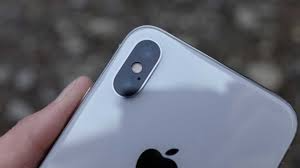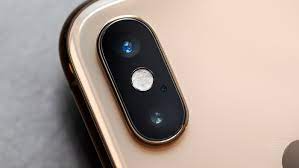1. Introduction to iPhone X Camera System
Pioneering Mobile Photography
The iPhone X camera system represents a pivotal moment in the evolution of smartphone photography. Launched in 2017, it marked a significant leap for Apple’s imaging capabilities, incorporating cutting-edge hardware and advanced computational photography features that redefined the boundaries of what a mobile camera could achieve. The device introduced an all-new dual-camera setup on the rear, consisting of two 12-megapixel sensors with distinct lenses – one wide-angle and another telephoto. This design not only enabled high-resolution imagery but also facilitated features like optical zoom, enhanced low-light performance, and the much-celebrated Portrait Mode with Depth Control.
Apple’s meticulous attention to detail was evident in the iPhone X camera‘s Optical Image Stabilization (OIS) technology, which reduced camera shake, especially when capturing photos or videos in less-than-ideal lighting conditions. Moreover, the integration of machine learning algorithms into the camera software empowered users to capture professional-grade shots, even without extensive photographic knowledge.
The front-facing camera also underwent a groundbreaking transformation, housing a TrueDepth sensor array that powered the innovative Face ID security feature while simultaneously enabling advanced selfie capabilities such as Portrait selfies and Animojis. The iPhone X thus established itself as a pioneer in camera technology, setting the stage for future iPhones and influencing the broader smartphone industry’s approach to camera innovation.
2. Dual 12MP Camera Setup
The Heart of iPhone X’s Imaging Power
The dual 12-megapixel camera setup on the iPhone X is a cornerstone of its imaging prowess, providing users with an array of versatile and professional-level photography features. This configuration includes two separate lenses—a wide-angle lens and a telephoto lens—each equipped with a 12MP sensor.
Wide-Angle Lens: With a larger field of view, this lens excels in capturing expansive landscapes or group photos. It is particularly adept at maintaining image quality even in challenging lighting situations, thanks to its large aperture (f/1.8), which allows more light into the sensor for brighter, clearer images with reduced noise.
Telephoto Lens: Offering optical zoom up to 2x without loss of detail, this lens is perfect for portraits or when you need to get closer to your subject without physically moving. Its aperture of f/2.4 ensures sharp focus while maintaining a shallow depth of field that can beautifully isolate subjects from their backgrounds.
Both lenses come with Optical Image Stabilization (OIS) which compensates for hand movements, resulting in sharper photos and smoother video footage. The combination of these lenses not only facilitates optical zoom but also enables advanced features such as Portrait Mode. In this mode, the iPhone X uses both cameras and sophisticated software algorithms to create a depth map, blurring the background (bokeh effect) while keeping the subject in sharp focus, mimicking the aesthetic of a DSLR camera’s portrait shots.
Additionally, this dual-camera system supports advanced features like optical zoom during video recording, enabling smooth transitions between focal lengths. Apple’s computational photography enhancements further refine the output, ensuring that the iPhone X’s camera system delivers high-quality, vibrant, and detailed images in various scenarios.
3. Optical Image Stabilization (OIS) and True Tone Flash
Both rear cameras are equipped with Optical Image Stabilization, ensuring steady shots even when the user’s hand is not perfectly still. This feature reduces blur caused by handshake, especially in low-light conditions. Additionally, the iPhone X uses a quad-LED True Tone flash which adjusts color temperature dynamically to match ambient lighting, resulting in more natural-looking flash photos.
4. Portrait Mode and Depth Control
One of the standout features of the iPhone X camera is its Portrait Mode. By leveraging the dual-camera setup and machine learning algorithms, it can create a shallow depth-of-field effect, blurring the background (bokeh) and keeping the subject in sharp focus. The introduction of Depth Control allowed users to adjust the level of background blur both in real-time and post-capture, providing greater creative control over their portraits.
5. Enhanced Low-Light Performance
The larger pixels and improved image signal processor (ISP) of the iPhone X significantly enhance low-light photography. It supports faster autofocus in dim environments and delivers brighter, less grainy images due to better noise reduction. Smart HDR, introduced with the iPhone X, captures multiple exposures in rapid succession and combines them intelligently to produce photographs with improved dynamic range and highlight/shadow detail.
6. Face ID Technology and Front-Facing Camera
The front-facing TrueDepth camera on the iPhone X was a game-changer. Not only did it power the device’s facial recognition security system, Face ID, but it also enabled advanced selfie features like Portrait mode and Animoji. This 7MP sensor, accompanied by an infrared camera, dot projector, and flood illuminator, projects and analyzes over 30,000 invisible dots to create a precise depth map of the user’s face, making selfies more expressive and secure.
7. Video Capabilities
The iPhone X’s camera prowess extends to video recording, supporting 4K resolution at 60 frames per second and slow-motion video up to 240fps in HD. Optical image stabilization ensures smooth footage, while the ability to shoot in extended dynamic range at 30fps provides higher quality videos with reduced blown-out highlights and crushed shadows.
Conclusion: The iPhone X Camera Legacy
The iPhone X camera system set a new benchmark in smartphone imaging, combining hardware advancements with sophisticated software algorithms to deliver professional-grade results in a handheld device. While newer iPhones have built upon this foundation, the iPhone X remains a milestone in the evolution of mobile photography, demonstrating Apple’s commitment to innovation and user experience.